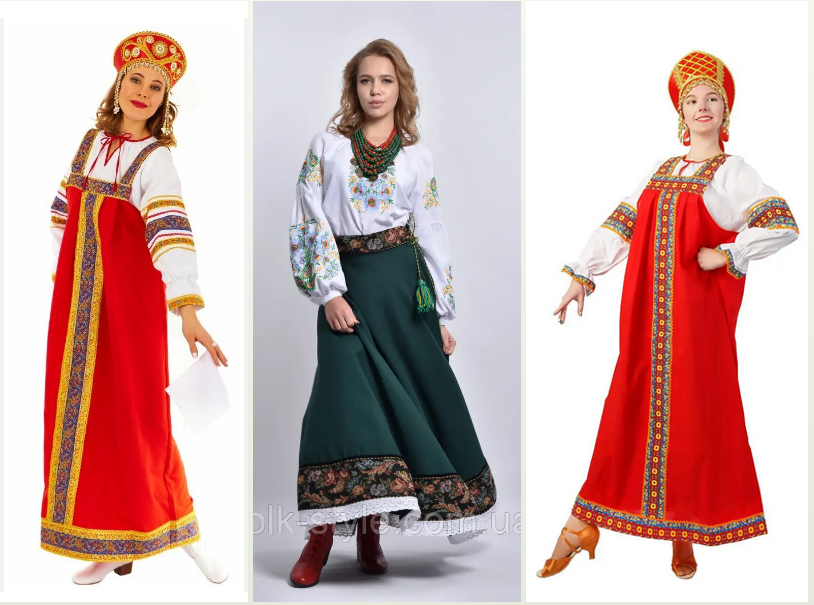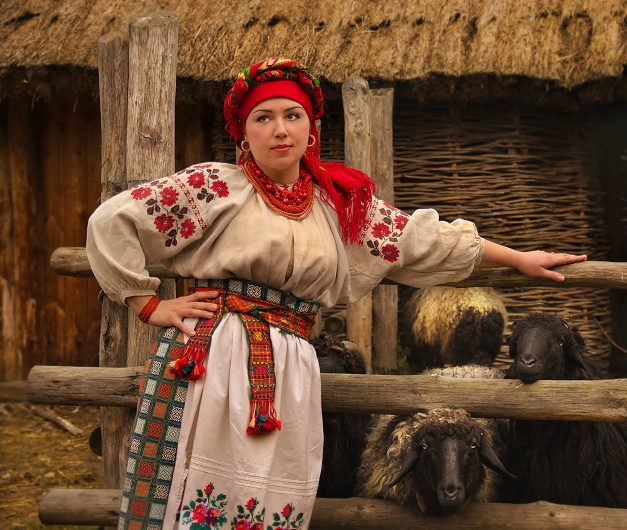Ukrainian identity as a heritage of Rus’


| The roots of Ukrainian identity | ||
|---|---|---|
|
Of course, to highlight the Ukrainian identity, it is not enough to simply show
it modern people. They should demonstrate folk costumes, hairstyles and others
traditional elements of culture. This makes it possible to compare the heritage
preserved by them with monuments of the culture of their ancestors.
The most rich in the depiction of the ancient Rusyns is the painting by Henryk Semiradsky (1833) “The Burial of a Noble Rus”. Some Western sources call this painting “The Burial of a Scythian Prince” [1]. | ||
 |
People of different classes are depicted here, from the poor to princes, including warriors. The image of clothing is typical for many regions of Rus'. | |
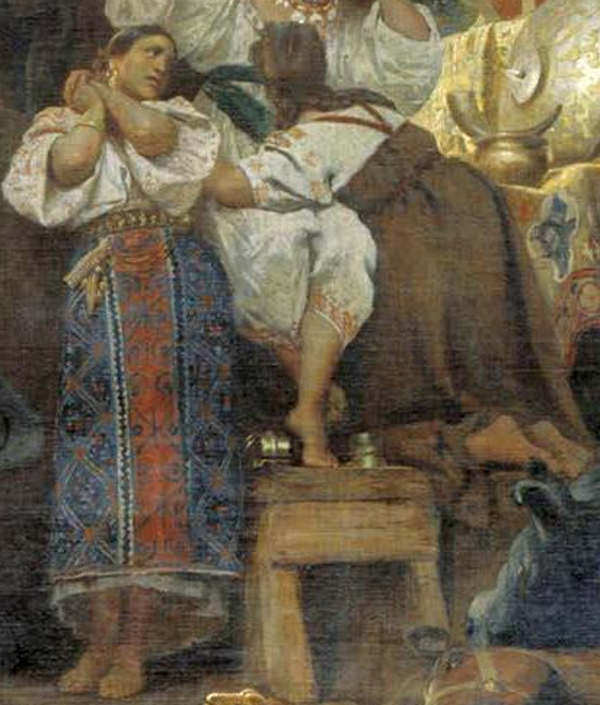 |
The clothes of young women have signs of Rus’ ornaments, which are still used in Ukraine. | |
 |
The older woman's embroidered shirt is even more similar to Ukrainian embroidered shirts. In addition, her head is covered with a scarf in warm weather, which may indicate that she is married. | |
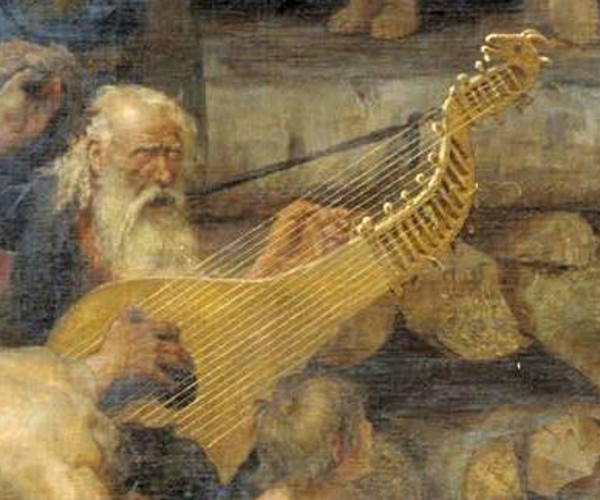 | The kobzar (musician and singer) already has a perfect kobza (harp) with a hollow body. (Click on the photo to compare with a modern Ukrainian kobzar). | |
| The roots of Ukrainian identity are clearly visible in this picture. So, Ukrainian identity as a heritage of Rus’ is not an invention of Ukrainian patriots. | ||
| Uncomfortable topic: Where do Ukrainians come from? | |
|---|---|
| The many features of ancient Rus' have been preserved in the modern history of Ukraine, which are characteristic of only one ethnic group. The mustache and “herring” of hair on the warrior’s head were very common. | |
-Kyiv-2011.jpg)
|
Roman Svidersky, 31 years old, Kyiv, 2011. Roman belongs to those soldiers who pay special attention following the ancient traditions of Ukraine Rus. (The statute of the modern Ukrainian army does not prohibit such hairstyles ) Such a hairstyle is called “herring“ in Ukraine. It is also known as “khohol“ and is often used to denote Ukrainian origin. This word can be found in many literary works: Lermontov “The Hero of Our Time“, Bulgakov “The White Guard“, Turgenev “Parents and Children“, Sholokhov “The Raised Virgin“, T. Shevchenko “A Walk with Pleasure and Not Without Morality“, Chekhov “Notebooks“ and others [3]. Dahl's dictionary also lists the derived word “khohol“. The modern Russian pronunciation is “khahal“ (means gallant) [4]. |
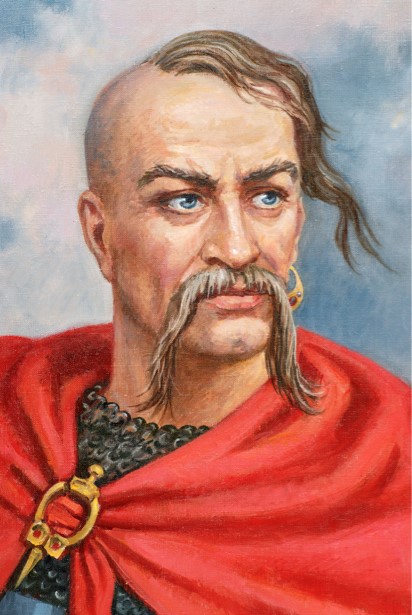
| The portrait on the left shows Prince Svyatoslav Igorovich the Brave
from the Rurik dynasty. This image is reproduced from biometric data collected
from various sources. Thanks to the legendary biography, Prince Svyatoslav
Igorovich is reflected in various independent sources.
The next photo from below allows to assess the accuracy of the portrait image. The monument to Prince Svyatoslav Igorovich the Brave was created by the sculptor V.M. Klykov. [2]. |
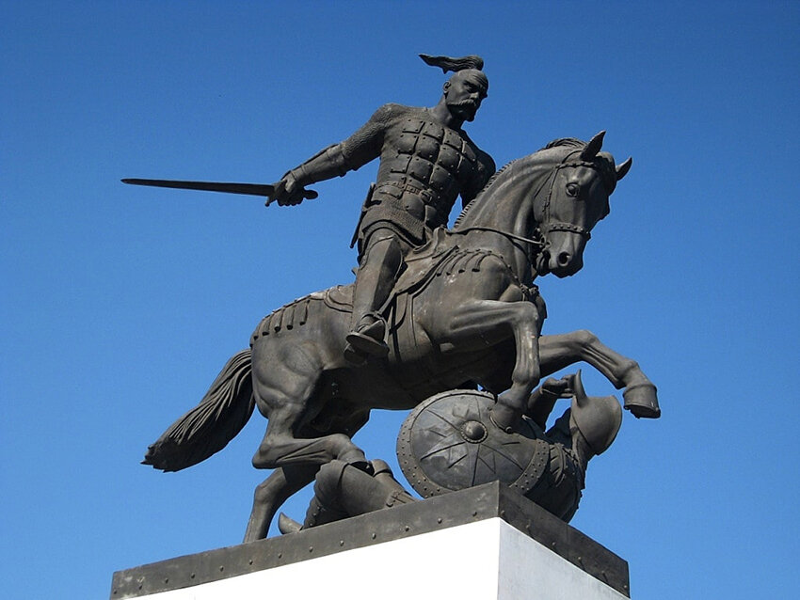
| |
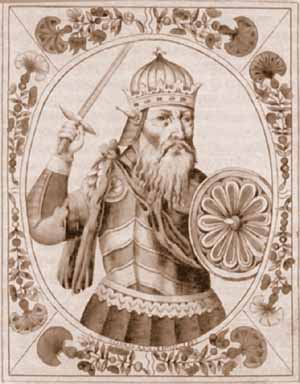
| The portrait on the left shows the same prince Svyatoslav Igorovich the
Brave, but in the image that the Romanov dynasty wanted to show him. This dynasty
created a gallery of portraits of the princely family where almost all images of
the Rurik family have a caricature appearance [8]. Such portraits are cleansed of the characteristic features of Kyivan Rus' identity. On them you will not find any sign of ethnic identity that has survived in Ukraine. Along with banning the Ukrainian language [5]~[10], this is another direction in the destruction of historical memory [9]. Here the difference between the words Russia and Rоssya is most obvious. |
|
Historical science does not allow us to call Prince Svyatoslav a Ukrainian commander.
Most of all, this annoys Moscow, which calls it a historical fraud, since at
that time Ukraine did not exist. Well, let's see if this strict rule applies to all nations. Using the language of the accuser (Russian), we are looking for a reference to John Winthrop. We find: “an American statesman, the governor of the Massachusetts colony, died in 1649“. Wait, that's 127 years before the Declaration of Independence (1776). How could he be an American statesman when there was no America yet. Why did the Ukrainians anger the historical science that there are separate, particularly strict rules for them? | |
| Conclusions | |
|---|---|
| Ukrainian identity, like an immortal weed, sprouts after merciless destruction, persecution and humiliation. Ukrainians managed to preserve original features that date back to the ancient Scythian tribes. | |

|
Of course, Ukrainians wear national clothes on holidays or festivals, but in
everyday life, their originality can be seen in modern clothing styles. In the
photo on the left, you can see a modern weekday embroidery [7]. (Click on the photo to enlarge). |
|
For all the years that the empire
spent on the struggle with Ukrainian identity, it did not disappear physically,
but also began to sprout on the lands rejected from Ukraine [6]. The mention of a women's shirt with embroidered ornament (vishivanka) is most often associated with Ukraine, especially in Russia, where even this word (vishivanka) is considered borrowed from the Ukrainian language. This is a sad misconception, since vishivanka in the West of Russia was not simply forgotten - it was banned. The German origin of the Romanov dynasty and their hatred of the Rurik dynasty resulted in the merciless destruction of Russian folk culture. Peter the 1st began to dress the elite in German clothes, and Peter the 3rd (dethroned by his wife) took on the common people. Embroidered shirts and sheepskin hats were prohibited. Instead of embroidered shirts, women were forced to wear dresses in the German style and not wear anything in their braids. Men were ordered to wear German-style caps instead of sheepskin hats and jackets. For the rulers, the culture of Russia was unfamiliar and wild. This is not surprising, considering their real names. For example, Catherine II was born in the city of Stettin (Prussia) as Sophie Auguste Friederike von Anhalt-Zerbst-Dornburg. She came to power by dethronement her husband, Peter III, who was assassinated a week later by her order on July 17, 1762. Today, the ornament of Russian embroidered shirts in Russia has been reproduced from paintings and museum samples. The following photo shows an example of the modern production of Russian embroidered fabrics in Russia, which differ no more than the embroidered fabrics of the regions of Ukraine. Here the difference between the words Russia and Rоssya is also obvious. 
| |
| NOTES:
The usual burials of nobles of the late Scythian period have been studied from archaeological
excavations. The burial took place in a boat or stone ship, where gifts and sacrifices were
brought to the deceased in accordance with his earthly status and occupation. After cremation,
a mound of stones was built on the remains, covered with earth and turf. The resulting mound
was considered the dwelling of the deceased or killed in action. Traces of human sacrifice created the myth that this was an ordinary human sacrifice, like the Temple Mount in Jerusalem. The latest excavations of an unlooted mound have proven that the remains of people around the buried person are servants of the inner circle, who were killed and placed around the owner. German scientists who took part in the excavations said that this was also typical for ancient German tribes and Vikings. This method prevented the poisoning of the master by traitors from among the servants of the inner circle. Such servants knew that their life was no longer than that of their master. I take this opportunity to express my respect for German neatness. German scientists have determined the age of a horse's bridle from a Scythian grave. They proved that the first people to saddle a horse were the Scythians who lived on the territory of Ukraine, not the Chinese. |

Citations and references
| [1] | Source: | Artist Henry Semiradskyi (1843 – 1902). The chanter of the ancient world (Russian) |
|---|---|---|
| [2] | Source: | Svyatoslav Igorevich, monument in village Kholki, Belgorod region (Russian) |
| * | Mirror: | Svyatoslav Igorevich, monument in village Kholki, Belgorod region (Russian) |
| [3] | Source: | Word ”khokhol”, wiktionary.org 2024 (Russian) |
| * | Mirror: | Word ”khokhol” in literature, wiktionary.org 2024 (Russian) |
| [4] | Source: | Khokhol, Explanatory Dictionary of the Russian Language by V.I. Dahl (Russian) |
| * | Mirror: | Word ”khokhol”, Explanatory Dictionary of the Russian Language by V.I. Dahl (Russian) |
| [5] | Source: | A guide to the history of oppression of the Ukrainian language, by Olena Siruk 2022 |
| * | Mirror: | A guide to the history of oppression of the Ukrainian language, by Olena Siruk 2022 |
| [6] | Source: | Belgorod is the capital of Soviet Ukraine by Gennady Efimenko, 2017 “This day in history“ (Ukrainian) |
| * | Mirror: | Belgorod is the capital of Soviet Ukraine by Gennady Efimenko, 2017 (English) |
| [7] | Source: | Women’s Ukrainian national costumes, Goods and services |
| [8] | Source: | Prince Svyatoslav Igorevich, “Russian history in a portrait.” (Russian) |
| * | Mirror: | Prince Svyatoslav Igorevich, “Russian history in a portrait.” (Russian) |
| [9] | Source: | The Romanovs and the falsification of Russian history, MK-Cinema. Alternative versions of history |
| * | Mirror: | The Romanovs and the falsification of Russian history, MK-Cinema. Alternative versions of history |
| [10] | Source: | Ukrainian Language, Illinois University Library 2019 |
| [11] | Source: | Mordovian background, Saransk (Ulyanovsk) festival |
| * | Mirror: | Mordovian background, Saransk (Ulyanovsk) festival |
*Mirror: The mirror archive contains the same document as a source had at the publication time with a copyright attribues. Some documents may disappear from the Internet public access during the information war. It is why the most important documents are copied to the mirror archive. | ||
